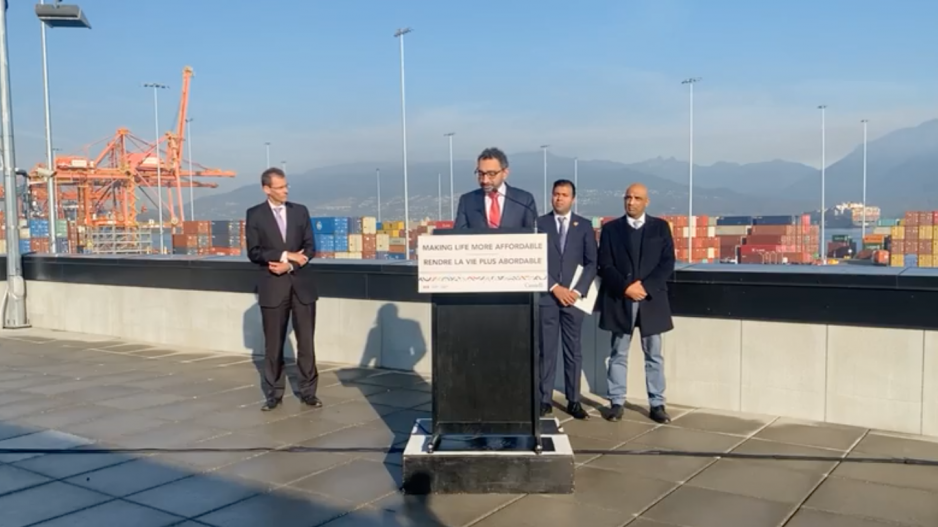Shopping frenzies over toilet paper marked the outset of the pandemic. Months later, Canada found itself playing catch-up as the COVID-19 crisis exposed the country’s lack of vaccine production capacity.
Ottawa is banking on big bucks to alleviate many of those types of bottlenecks in the future, with Transport Minister Omar Alghabra visiting Vancouver Friday to pledge $136 million in spending to pursue the “digitization” of supply chains.
“That means, for instance, improving real-time data collection by using satellites and smart devices,” he said while at logistics firm DP World’s portside offices in Vancouver. “It means developing systems and analytics, and using machine learning and AI. It also means collaborating with the academic community … and research in transportation logistics and tools.”
It is unclear exactly what projects the $136 million will go towards at this point, Alghabra added. Transport Canada said it "will soon launch a new Call for Proposals" and start getting inputs from stakeholders within the supply chain infrastructure to determine what exact measures, technologies and systems will be added under the new initiative.
"So now we have the theme," Alghabra said. "The idea is to provide access to information in a digital format... As far as specifics, we are going to have to wait and see what kind of proposals we receive."
There is also no timeline on when the first of these projects under the new initiative would be completed.
The new initiative's funding comes out of $603.2 million earmarked in Budget 2022 - to be spent over a five-year period - towards strengthening Canada's supply chains in the face of climate change and global events.
The new Advancing Industry-Driven Digitalization of Canada’s Supply Chain initiative would see the government work with the private sector to make it easier to co-ordinate the transportation of goods as well as enhance data collection needed by industry to determine where those goods need to be based on demand.
“In Vancouver, the situation is already critical,” Alghabra said.
“This is because of the large and complex operations of the port across many terminals, the constrained nature of the land and sea infrastructure, the proximity to population and impact on sensitive ecosystems.”
The funding announcement comes after the National Supply Chain Task Force urged the government last week in a report to help facilitate “digitization” to better collect and curate data throughout Canada’s supply chains.
“It would provide industry the insight to understand when and where to surge or transform a product, and would increase consumer confidence in the supply chain, reducing future surges in panic buying,” the report stated.
“Stakeholders articulated that without access to timely data they are unable to optimally strategize for future infrastructure investments, identify new market opportunities and improve service to customers. While some stakeholders said they were open to sharing data, they raised concerns about competition implications and advocated for government to act as the intermediary to set data standards and oversee collection.”
Vancouver Fraser Port Authority CEO Robin Silvester said he’s optimistic this new initiative could help operations at the West Coast port, the largest in Canada.
The Vancouver Fraser Port Authority, Transport Canada, the Prince Rupert Port Authority are already collaborating on a West Coast Supply Chain Visibility program, which aims to have visibility into the movement of 95 per cent of all cargo going through this side of the country by the end of this year.
Like the digitization initiative, the visibility program is relying heavily on data collection to improve the movement of goods.
“The visibility from that data allows us … to understand overall supply-chain performance and identify problems within the supply chain to advance solutions to improve operations and efficiency, increase capacity and also target investments,” he said following Alghabra’s announcement.




